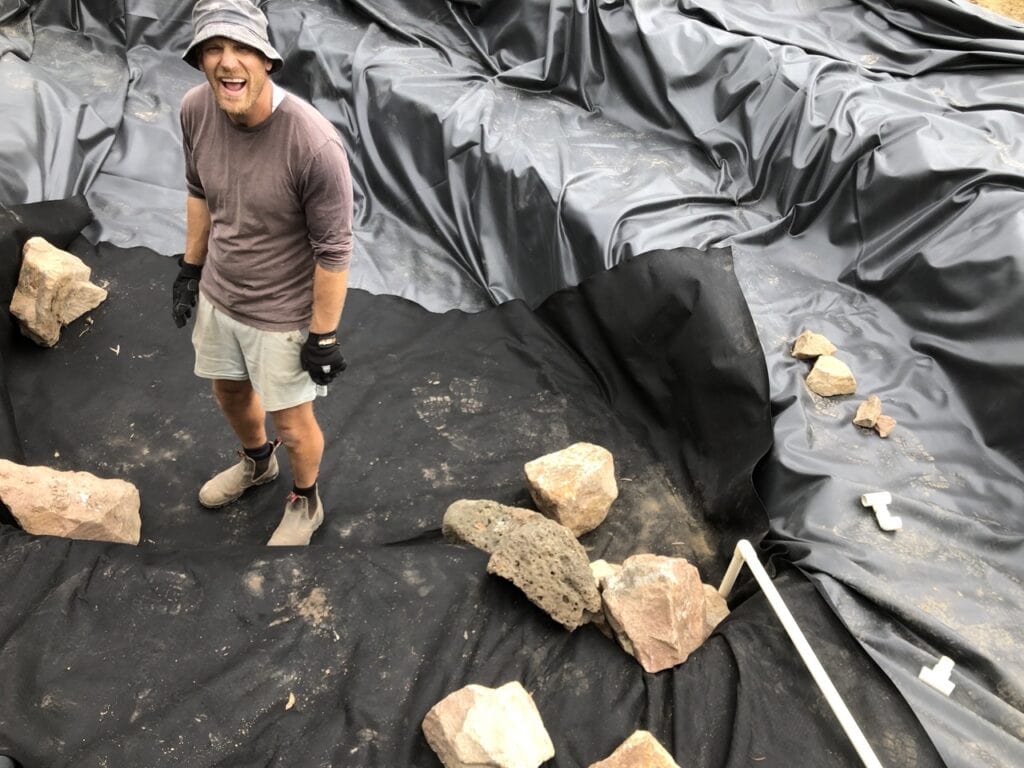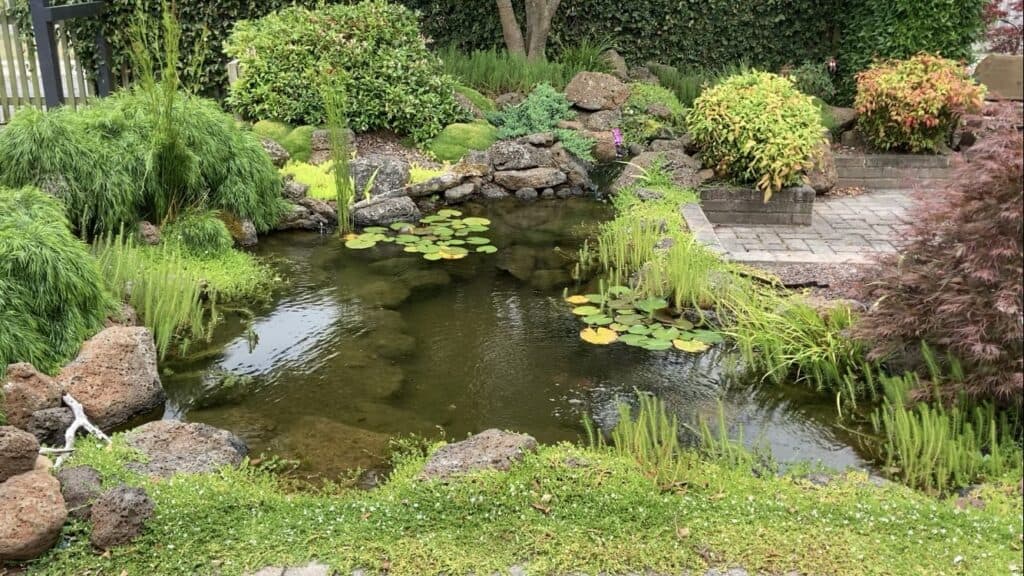Adding a stream or waterfall to your yard is a fantastic way to enhance your landscape and support local biodiversity.
While many professional builders showcase stunning high-end projects, my focus is on creating affordable and achievable options for the average DIYer.
Hi, I’m Kev! My goal is to help you build and maintain ponds and water gardens without breaking the bank.
In this post, I’ll briefly cover the basics of building a stream or waterfall, including materials, design tips, and pump selection. If you prefer you can watch the video below.
Materials for Building Streams and Waterfalls
The simplest and most cost-effective way to build a stream or waterfall is by using a liner. Here’s what you’ll need:
- EPDM Rubber Liner: Durable, stretchy, and easy to work with, this liner ensures water stays where it should.
- Geotextile Fabric: Place it above and below the liner for added protection, especially in areas prone to animal digging.
- Rocks, Pebbles, and Plants: Use these to cover the liner and create a natural look.
- Pump: The pump will be used to move water from the pond (or pond-less reservoir) to the start of the stream or waterfall.
For extra protection, some builders use concrete-covered fabric in high-risk areas. Remember, the liner is one of the most affordable yet critical parts of your project, so take steps to protect it well.
You can find links to affordable pond products here.
Choosing the Right Pump
Pump selection is vital for ensuring the right water flow. Here are some key tips:
- Flow Rate: For a stream or waterfall 30 cm (1 ft) wide, you’ll need at least 4,000 liters (500 gallons) per hour. For dramatic water effects, double or triple this amount.
- Energy Efficiency: Low-voltage, variable-speed submersible pumps are my go-to choice. They’re energy-efficient and allow you to adjust the flow easily.
- Head Height and Pipe Length: Calculate how far and high the water needs to travel. Add 10 cm of head height for every meter of pipe length to account for friction.
If you need help sizing your pump, filter, or liner, I’ve created a downloadable cheat sheet.

Blueprint I use to build my ponds
- All the numbers I use to design my ponds, delivered straight to your inbox
- These formulas have helped people all over the world build beautiful, low maintenance ponds, without spending a fortune.
- Access to a private community of like minded people and a chat bot that loves answering pond related questions.
Design Tips for Stunning Water Features
Creating a beautiful stream or waterfall doesn’t require a big budget. Here are my top design tips:
- Scale the Waterfall: Match the size of your waterfall to the surrounding landscape. A towering waterfall in a flat yard can look out of place.
- Limit Rocks in Waterfalls: Use two frame rocks and one spill rock for a natural look. Avoid stacking small rocks, as it complicates construction.
- Add Curves and Turns: Straight streams look unnatural. Use a wider liner to create curves and varied angles for added interest.
- Use Varied Rock Sizes: Mix large rocks, pebbles, and even logs to mimic nature.
- Incorporate Plants: Soften edges with aquatic plants inside the liner and terrestrial plants along the stream banks.
- Optimize Views: Position waterfalls where they’re visible from inside your home or outdoor seating areas.
- Check Liner Edges: Low edges are a common cause of leaks, so ensure the liner sits higher than the water level.
Here’s a video on how I built one of my streams.
Managing Water Movement and Evaporation
Fast-moving water looks spectacular but leads to more evaporation. If you live in a hot, dry area, consider a subtle, slower-moving stream to conserve water and reduce pump running costs.
Here is an article on the rates of evaporation that are expected in a standard pond. The more water movement and splashing, the more evaporation.
I also recommend oversizing your pump and using a variable-speed model. This gives you flexibility to adjust the flow rate without relying on complicated valves.
Get Inspired
If you’re looking for design inspiration, check out professionals like Jack from Atlantis Water Gardens.
While my projects aren’t as elaborate, they’re practical, affordable, and perfect for DIYers. You can also find videos of my previous builds on my YouTube channel.
If you want to add a pond as part of your stream or waterfall build you might like to read my ultimate guide to building a pond.
I hope this article, links and videos were helpful. Thanks for reading.

Join my free email list
If you would like to join my free email list click the button below.
I promise I won’t spam you, I’ll only send information I think can help you save money building and maintaining a pond.

